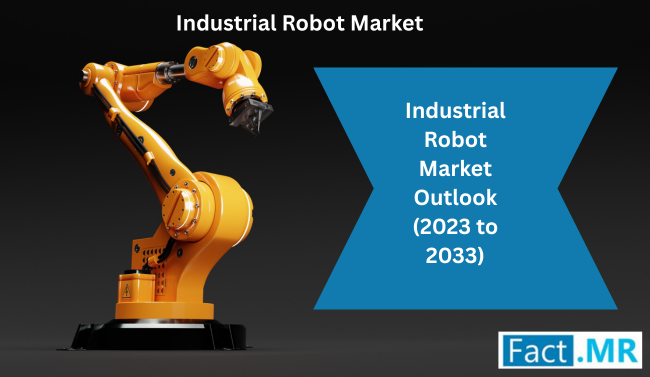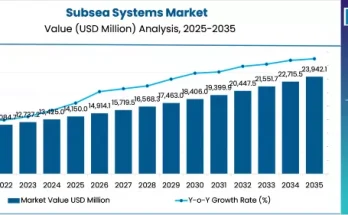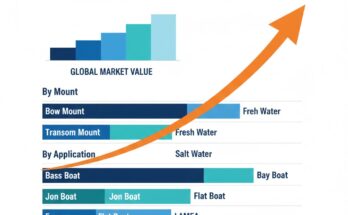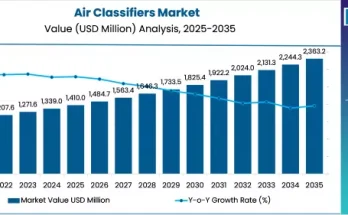According to a comprehensive study released by Fact.MR, a leading market intelligence provider, the industrial robot market is poised for substantial growth over the coming years. Driven by the rapid advancement of automation technologies and the integration of intelligent systems, industrial robots are transforming operations across sectors including automotive, electronics, and aerospace.
Industrial robots are enabling manufacturers to boost productivity, improve precision, and enhance safety by performing repetitive and complex tasks with minimal human intervention. The Fact.MR study highlights a significant uptick in demand, especially as companies prioritize efficiency, quality, and cost-effectiveness in increasingly competitive environments.
The global industrial robot market is undergoing a significant transformation, propelled by advancements in automation, artificial intelligence, and the increasing demand for efficiency in manufacturing processes. According to Fact.MR, the industrial robots market is projected to be valued at US$ 17,925 million in 2023, with expectations to expand at a CAGR of 12.1%, reaching approximately US$ 56,171.4 million by 2033. This growth underscores the pivotal role of industrial robots in shaping the future of manufacturing and production.
Market Overview:
Industrial robots are automated, programmable machines capable of performing complex tasks with precision and efficiency. They are integral to modern manufacturing, offering solutions that enhance productivity, ensure quality, and reduce operational costs. The market encompasses various robot types, including articulated arms, collaborative robots (cobots), SCARA, cartesian, cylindrical, and others, catering to diverse applications across industries such as automotive, aerospace & defense, chemicals & materials, and more.
Regional Insights:
East Asia Leads Global Demand:
The report identifies East Asia as the dominant regional market, with significant growth fueled by widespread adoption of robotics in industrial applications. Among East Asian nations, China stands out as the leading contributor, supported by proactive government policies, robust manufacturing infrastructure, and a strong focus on technological self-reliance.
Europe and North America Also Key Contributors:
Europe is recognized as another important region, underpinned by established industrial ecosystems and a strong presence of automotive and machinery manufacturers. Investment in smart manufacturing technologies is contributing to the region’s expansion in the robotics space.
North America continues to hold a solid position, supported by advanced technology adoption, innovation-led companies, and increased deployment of automation in warehousing and logistics.
Key Trends & Forecast:
Technological Advancements – The integration of artificial intelligence (AI) and machine learning (ML) has revolutionized industrial robotics. Modern robots are now capable of learning from their environment, adapting to new tasks, and improving performance over time. This evolution has expanded their applicability across various sectors.
Emergence of Collaborative Robots (Cobots) – Cobots are designed to work alongside humans, enhancing productivity and ensuring safety. Their ease of programming and flexibility make them ideal for small and medium-sized enterprises (SMEs) looking to automate processes without significant infrastructure changes.
Industry 4.0 and IoT Integration – The advent of Industry 4.0 has emphasized the importance of interconnected systems. Industrial robots equipped with IoT capabilities enable real-time data collection and analysis, facilitating predictive maintenance and optimizing production workflows.
Government Initiatives and Policies – Governments worldwide are implementing policies to promote automation and robotics. For instance, China’s 14th Five-Year Plan focuses on advancing the robotics industry, aiming to position the country as a global leader in robot technology.
Applications & End-Use Outlook:
Automotive Industry – The automotive sector remains the largest consumer of industrial robots, accounting for 20.3% of the market share in 2023. Robots are extensively used for tasks such as welding, assembly, and painting, ensuring precision and consistency in manufacturing processes.
Assembly Applications – Assembly operations represent a significant application area, valued at US$ 3.44 billion in 2023, capturing 19.2% of the market. The demand for robots in assembly lines is driven by the need for speed, accuracy, and the ability to handle complex tasks.
Heavy Payload Operations – Robots with a payload capacity above 600 kg are crucial for industries requiring the handling of heavy components. This segment is estimated to be valued at US$ 5.10 billion, accounting for 28.5% of the market in 2023.
Supportive Government Policies Strengthen Market Fundamentals:
Fact.MR emphasizes the role of government incentives and industrial policy frameworks in accelerating robot adoption. Countries across East Asia, Europe, and North America are introducing tax incentives, grants, and subsidies to encourage automation and technological innovation in manufacturing.
National development strategies and industrial modernization programs are fostering a conducive environment for robotics firms to scale operations and innovate further. These initiatives also aim to address labor shortages and boost global competitiveness.
Conclusion:
The industrial robot market is undergoing a dynamic transformation, powered by automation trends, digital technologies, and strategic policy support. With advancements in robotics engineering and AI integration, the industry is set to become a cornerstone of next-generation manufacturing.
As industries continue to optimize their operations for productivity, quality, and safety, the demand for industrial robots is projected to remain strong across global markets. According to Fact.MR, businesses and investors have ample opportunities to capitalize on this momentum by aligning with emerging trends and technological innovations in the robotics landscape.



